Hosta "Christmas three": description and cultivation

One of the popular ornamental foliage crops often used for garden decoration is the Christmas Three Hosta.
It has many advantages - high winter hardiness, quick survival rate, unpretentiousness to care and, of course, the beauty of the leaves reaching fantastic sizes.
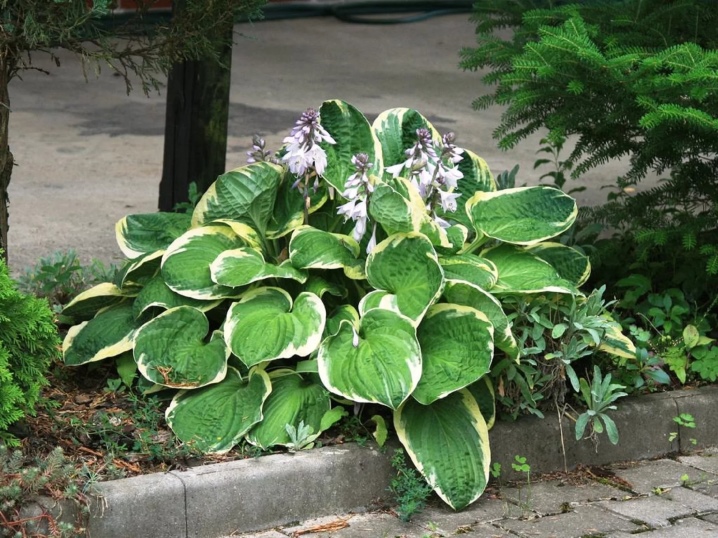
Description of culture
An ornamental variety is a perennial herb belonging to the Asparagus family. Under natural conditions, the culture grows in the Far East, China and Japan, as well as on the island of Sakhalin. The moisture-loving shrub prefers places with natural reservoirs near rivers, ponds and lakes, but can also grow in forests and on mountain slopes.
The characteristics of the plant are as follows.
- The hosta root system is powerful, rapidly growing, helping the variety to survive in severe frosts.
- The shrub is 50-60 cm in height, the length of the peduncles is 35-45 cm.
- The diameter of the leaves of the shrub is striking - 70-90 cm, the leaf plates are heart-shaped in shape, their surface is distinguished by a beautiful dense texture and embossed grooves. Above, the leaves are dull, their underside has a light bluish bloom.
- The color of the leaves is deep emerald, the edging is yellow, eventually turns white. The leaves grow in several pieces, forming a rounded rosette.
- Hosta flowers are funnel-shaped bells of a pale lilac color, collected in beautiful brushes, but in order to maximize the beauty and size of the foliage, gardeners cut them, directing the energy of the shrub to the growth of the leaves.
- The bush blooms in the second decade of June, and flowering continues until September. The fruits of the Christmas Tree hosts are brown pods with seeds 2-3 mm long.


The variety is well adapted to survive in cold winters, it easily tolerates frosts down to -30 -40 degrees. In central Russia and more northern regions, gardeners often use the plant to decorate the suburban area, without fear of freezing the branches.
Landing
For planting, hosta seedlings, prepared cuttings and shoots taken after dividing the bush are suitable. Used and purchased in specialized centers seedlings with a closed root system, placed in a nutritious substrate of peat and humus. In this case, one must pay attention to the condition of the leaves and stems, which should not be damaged - it is better to purchase plants planted in pots. The roots should also be healthy, ideally their length is from 10 to 12 cm.
Planting material can be stored until disembarkation in the dark at a low temperature of +5 +10 degrees. A well-ventilated cellar or basement is suitable for this.
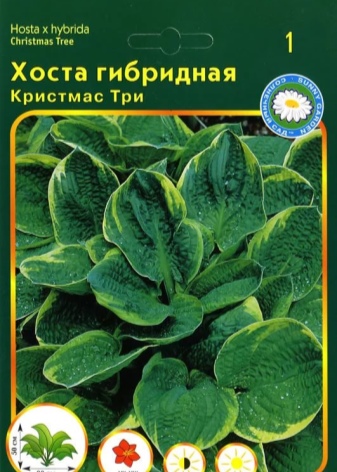
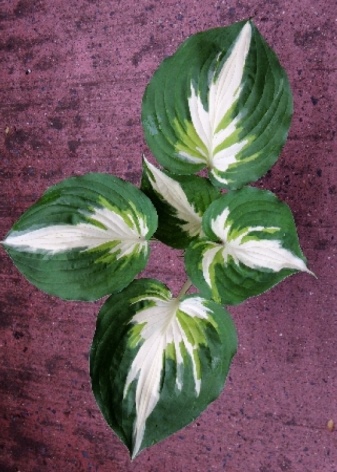
The rules for choosing a site for hosts of this variety provide for planting in partial shade and diffused lighting. These are the most favorable conditions for a plant to acquire a decorative look. In an open space, the culture is not planted, since the sun's rays can leave burns on the leaves.
It is worth taking care of protecting the bushes from strong winds - their gusts can break the plant.
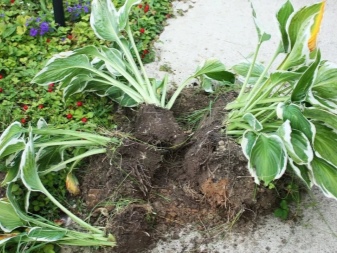
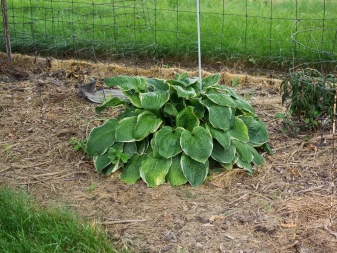
Suitable soil for the Christmas Three hosts is fertile land with good drainage. The best option is a sandy loam mixture with good air permeability. When growing a shrub, moisture stagnation should be avoided, as this causes plant diseases. Another feature of the variety is its love for slightly acidic soils. Site preparation consists of digging, removing weeds, loosening. The land should be enriched with organic fertilizers and only then the seedlings should be placed in open soil.
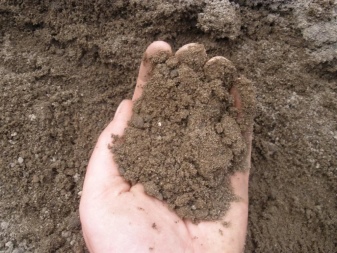
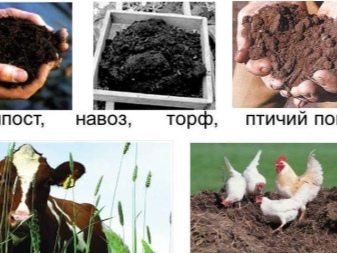
The main stages of planting look like this.
- Landing is carried out in April or early May when the ground is warm and there is no frost.
- A landing pit 30 cm deep is being prepared, which is quite spacious for the branched roots of the hosta, who like to grow to the sides.
- If it is necessary to plant a group of plants, the interval between the holes is about 1 m.
- After spilling the pit with water, drainage materials are placed in it - pebbles or coarse sand.
- Seedlings with open roots are soaked in water before being placed in open ground and kept in a stimulator for early rooting, too long and dry shoots are cut off.
- On top of the drainage, the hole is covered by 2/3 of nutritious soil (humus and peat).
- When placing the roots, they are straightened and buried to the root collar, the soil is compacted and watered with a sufficient volume of water for maximum moisture.
At the end, mulching is carried out using peat and coniferous bark, which has disinfecting properties.
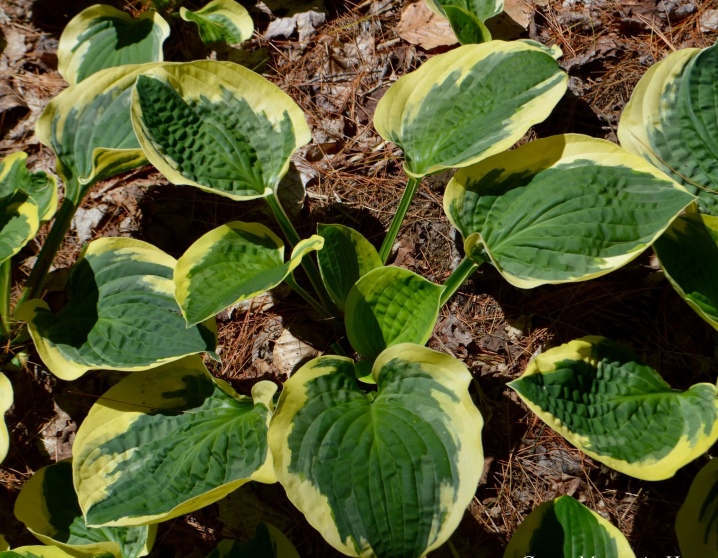
Care
Young shrubs need to be given a little time regularly, and then they will develop and grow well. Care consists of such basic agrotechnical procedures.
- Proper watering - with well-moistened soil, the water should not stagnate. In a drought at high temperatures, the flower is watered every day, the rest of the time - up to 4 times a week. Only the trunk circle is irrigated, avoiding the ingress of water on the crown.
- During watering, the soil is additionally weeded, loosen it and cover it with mulch using a peat mixture, coniferous sawdust, chopped cones and bark.
- The host prefers organic fertilizers. Thanks to natural additives, its color becomes deeper, and the crown becomes thick. Mullein (cow dung) is used in combination with Superphosphate, ammonium nitrate and potassium sulfate. As a fertilizer, they take crushed into dust, fresh grass, peat and humus. The time for top dressing is spring, the beginning of flowering and the end of flowering.
- Basically, there is no need for the hosta pruning procedure. The only thing that is required is cutting off the branches with flowers and peduncles, so that the plant does not waste energy on the formation of seeds. Cutting with the preservation of shortened shoots 5-7 cm long is justified only if the shrub is affected by fungus and other diseases. These activities are carried out in the fall, and pruning is carried out very carefully so as not to weaken the bush on the eve of winter.
- Diseases of the culture are extremely rare, but can appear due to excess water. The main ailments of the shrub are rust, sclerotinia, phylostictosis, gray rot and viral lesions. The total defeat of the branches requires the destruction of the plant, followed by the burning of the branches; in case of partial infection, spraying with solutions of fungicidal preparations is used for treatment. In the fight against pests such as snails and slugs, bait is used, other insects are exterminated with insecticides.
- Preparation for the cold season comes down to mulching the bushes with a thick layer of litter and peat. Thanks to this, the host will not only not freeze, but will also be provided with nutrients.

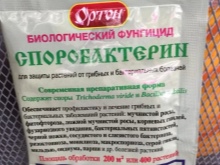

The decorative Christmas tree host is considered a valuable horticultural crop, and with minimal, but competent care, it responds with good growth and flowering.
It is used to decorate lawns and flower beds, bizarre landscape compositions and reservoirs. As a ground cover plant, the shrub is capable of creating luxurious carpets that picturesquely cover the ground and the slopes of small hills.
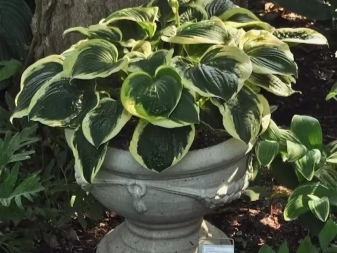
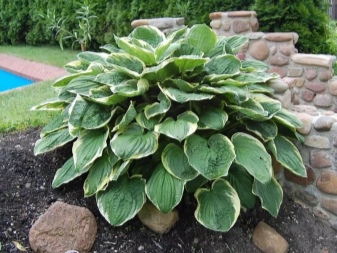
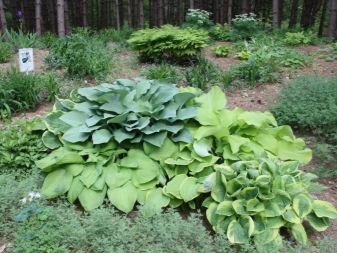
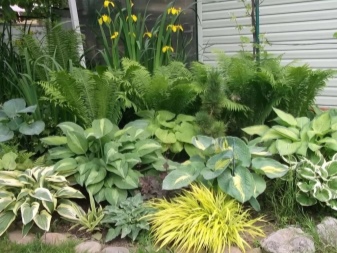
Review and characteristics of the Christmas Tree host await you next.







































































































The comment was sent successfully.